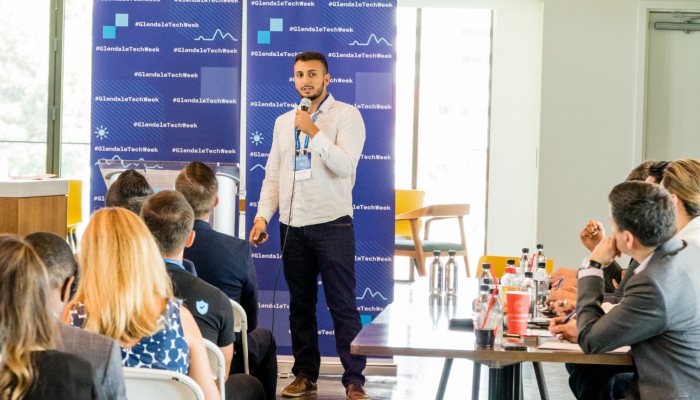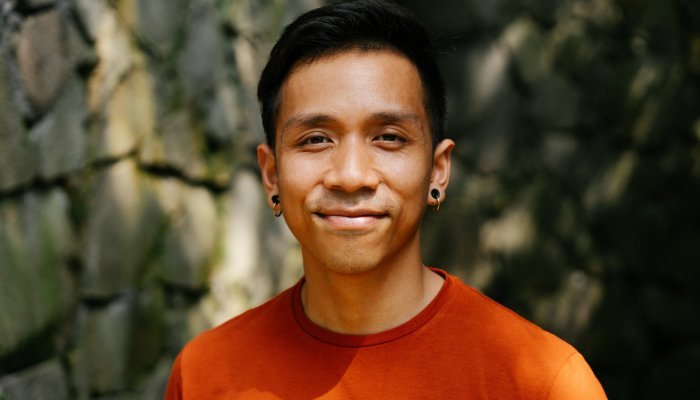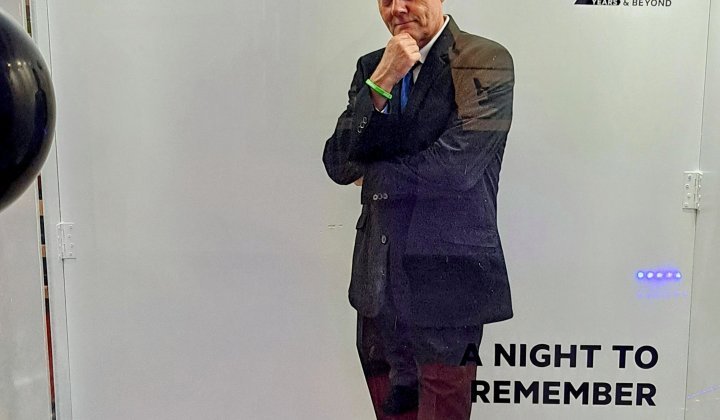Unless you’ve been living under a rock for the last year you’ll know that everyone’s been talking about ChatGPT. And for good reason. Even though chatbots aren’t new, ChatGPT is much more than what’s come before.
“Standard chatbots are usually designed to return a predetermined response to a limited number of questions,” says tech writer Deepak Kumar. “ChatGPT is far more generalisable, as it uses its understanding of language to interpret the question or task and determine the most appropriate response. This means that ChatGPT has a wide range of potential applications.”
This versatility allows for more efficient workflows by taking over time-consuming tasks, freeing humans to concentrate on more complex and nuanced work. Its use can also lead to improved personalisation of products and services, ultimately saving time and driving focus on higher value activities.
Case study 1: Content translation and personalisation
For Lizzie Brown, co-founder and CEO of Yoga Wake Up, ChatGPT has been wonderful. Her team travelled to Spain to record yoga and meditation teachers for a Spanish version of their app. To aid in initial outreach to prospective teachers, they used ChatGPT to translate English to Spanish and have also been using it to translate the entire app into Spanish in preparation for the upcoming release in Spanish-speaking countries.
“It’s been a seamless way to connect with people from different cultures, and ChatGPT even adjusts the translation if we request it to use a regional-specific dialect,” she says. “Because of ChatGPT, we’ve been able to connect with nine different teachers in Spain, send them all the onboarding materials that they need in Spanish, translate their class scripts from Spanish into English, and we’ll be able to create promotional materials in Spanish too!”
Case study 2: Meeting transcription and summarisation
Bayu Prihandito, founder of Life Architekture, is using Fireflies.ai (a tool built on top of ChatGPT) to automatically record and transcribe coaching sessions. This allows clients to fully focus on the coaching without worrying about taking notes, leading to more engaging and productive meetings. Fireflies.ai also has a search function that allows for quick review and pinpointing of key topics from past sessions, which is crucial for tracking progress and revisiting important discussions.
“ChatGPT has made my coaching more effective and client focused,” he says. “It’s not just a tool that’s changing how we operate; it’s also transforming how we deliver value to our clients. The concrete result is that our clients are more engaged during meetings, we can track their progress more effectively, and my team can focus more on delivering quality coaching rather than administrative tasks.”
Case study 3: Advanced threat detection
Skyhawk Security, an Israeli start-up focused on cybersecurity in the cloud, integrates generative AI into its threat detection process. ChatGPT’s access to vast quantities of data provides the threat detection process with the knowledge of thousands of security researchers in an instant. In 78% of cases, Skyhawk’s platform produced alerts earlier when adding ChatGPT to its threat-scoring process.
“ChatGPT is lowering operational costs for businesses that use our product by automating part of the threat-detection process,” says Jennifer Gill, VP of product marketing. “Less work equates to lower costs. Skyhawk is also using ChatGPT to generate textual explanations about the cybersecurity threats it detects. That means security analysts don’t have to take time out of their busy schedules to write it up for C-level executives.”
Case study 4: Content creation and scheduling
Paula Vazquez has seen her content creation time reduced by 85% thanks to ChatGPT. Whereas it used to take her two weeks to create social media posts for a month, she can now do it in two or three days.
“Before the introduction of AI tools like ChatGPT, I was using Canva and graphic design software for graphic creation,” she says. “Even when I was using templates, I had to think of captions from scratch. Now Devi AI’s ChatGPT integration does it for me. It gives me social media graphics with captions and allows me to schedule the content from a single tool.”
Case study 5: Saving time for human tasks
Ambula Health is using ChatGPT to revolutionise healthcare by making patient encounters efficient and effective for doctors. Its medical software integrates ChatGPT to transform the narrative of patient encounters into concise and structured medical notes. Not only does it capture symptoms, medical history, and prescribed treatments, but also subtle details like emotional cues. So, instead of a doctor grappling with tedious administrative tasks, they can focus more on the patient.
“One instance that comes to mind involves a busy physician struggling to recall the specifics of a patient’s case amidst her packed schedule,” says co-founder Khalil Jammal. “Our software stepped in and offered a summarised note from their last encounter. The report emphasised the patient’s anxious tone when discussing their treatment plan. With this insight, the doctor could empathetically address the patient’s concerns, ensuring their comfort. ChatGPT thus bridges the gap between technology and empathy in healthcare, ensuring no crucial information is lost in the process and doctors can provide an attentive, personalised patient experience. Our vision is to create a future where healthcare professionals are no longer burdened by paperwork but are facilitators of care and comfort. Through AI, we’re making this dream a reality.”
Limitations of ChatGPT
Of course ChatGPT isn’t perfect. It was trained on data up to a certain date and isn’t aware of current events, potentially leading to biased or inaccurate responses (see sidebar: Why does ChatGPT think I’m dead?) It might also struggle to keep track of context in conversations, which is why it’s so important to maintain focus on a single topic (see sidebar: Best practices for ChatGPT).
“ChatGPT has brought about a lot of mixed reactions, some positive and some negative, but we can’t always have it all,” says Kieran Sheridan, a board-certified physiotherapist and co-founder of GulfPhysio.com. “As a business owner, I love coming up with new ways to make my workload easier. I tested ChatGPT when it came out and I have to say that it left me floored and my first thought was how great it would be if I had this bot in my supply store. It can answer questions and still maintain a human feel. That plan fell through due to inconsistent communication between OpenAI and us. But, like I said, we can’t always have it all.”
Despite these drawbacks (not to mention the legal and ethical considerations when it comes to questions of ownership of the output ChatGPT generates) we have to accept that these tools are now part of our lives. And they’re just going to keep getting better, despite the calls that we should somehow stop training them to be more advanced. So, instead of feeling threatened, we should work with them as co-pilots, not as replacements. The more we do so the better they will get. And the better they will get, the better we will get too.
Best practices for ChatGPT
- Engineer your prompts: Ensure they are clear and specific. Use correct grammar and spelling. Detailed context can be beneficial, so don’t shy away from longer paragraphs if they offer clarity. Providing examples can further enhance understanding.
- Don’t share personal data: Prioritise your safety and confidentiality. Avoid entering personal, sensitive, or proprietary details.
- Maintain clear context: Give as much relevant background information as possible. The more context ChatGPT has, the more tailored and accurate the response.
- Keep it simple: While straightforward questions are effective, expand on details when necessary. Lengthier explanations can be useful if they contribute valuable context.
- Use the “act as if” method: Direct the model to assume specific roles or personas for more contextually relevant answers.
- Ask what else it needs: If the first response doesn’t hit the mark, ask ChatGPT what additional information might help improve the answer.
- Correct mistakes: Should ChatGPT err in its response, identify the oversight and request clarification or correction.
- Trust but verify: Always evaluate the accuracy, quality, and relevance of the provided responses. Remember that ChatGPT is a tool, not an unquestionable authority.
Learn more in the free Prompt Engineering for ChatGPT course from Coursera.org.
Why does ChatGPT think I’m dead?
A funny thing happened when I Googled my name with ChatGPT. The response was a bizarre but believable obituary of a writer who died four years ago.
“Eugene Yiga was a South African writer and journalist who passed away in 2019,” ChatGPT wrote. “He was known for his work in travel writing, music journalism, and cultural commentary.”
The model got some details correct (like the fact that I studied at the University of Cape Town) but made up books I never wrote (The Unofficial Guide to South Africa and The Rough Guide to Cape Town) and awards I never won (“Top 200 Young South Africans” from the Mail & Guardian, which would have been nice but no longer possible given that I’m not so young anymore).
Reading this was a strange and startling experience for me, a bit like Bruce Willis coming to realise that he was dead all along in The Sixth Sense. But the fact that ChatGPT “hallucinates” by confidently providing incorrect answers is not uncommon and is due to a mix of factors including insufficient data, noisy or dirty data, insufficient context, or inadequate constraints.
That’s why it’s best not to rely on ChatGPT for anything where there is only one correct answer or truth, as an American lawyer found out the hard way when he used the model to provide cases for a trial and was later subject to disciplinary action when it was clear that the legal precedents didn’t exist. Instead, ChatGPT is best for problems where there are a variety of possible solutions. Luckily, as an entrepreneur, there are lots of those.
Get updates from (the very much alive) Eugene Yiga at www.eugeneyiga.com.










